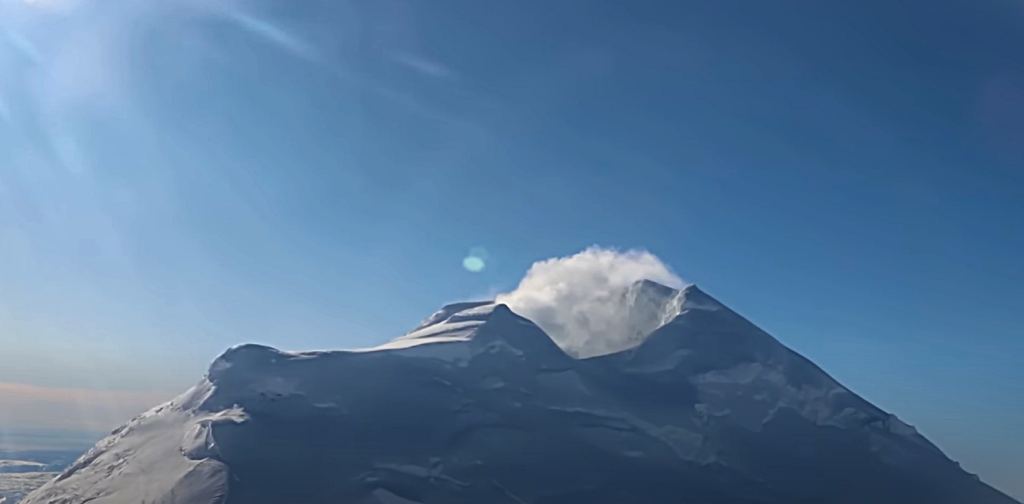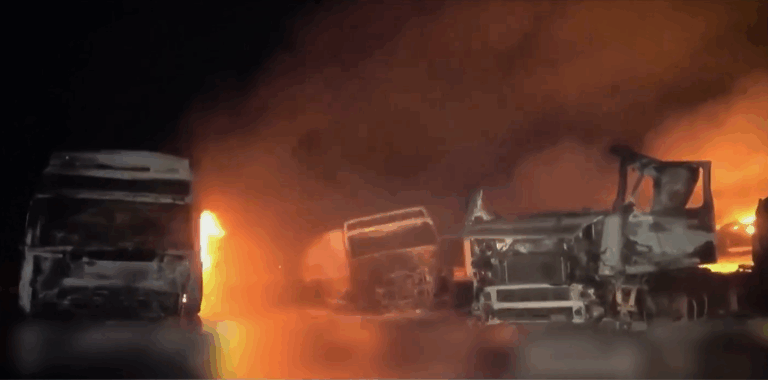Volcanologists are on high alert as a rapid increase in seismic activity and other warning signs suggest that a major volcano in the United States could erupt soon. Recent data reveals a surge in earthquake swarms, land deformation, and rising gas emissions, indicating that magma may be pushing toward the surface. Experts warn that the situation is escalating quickly, and while an exact eruption timeline is uncertain, the risks are growing by the day.

Mounting Signs of an Impending Eruption
Scientists monitoring the volcano have reported a significant uptick in underground tremors, often an early indication that magma is shifting beneath the surface. These frequent and intensifying quakes suggest that the pressure inside the volcano is building, increasing the likelihood of an eruption.
Additionally, satellite imagery has detected noticeable swelling in the terrain, a phenomenon caused by magma accumulating below the Earth’s crust. Another troubling sign is the spike in sulfur dioxide emissions, a gas commonly released as magma rises. Scientists have also noted higher temperatures in nearby geysers and hot springs, further reinforcing concerns that volcanic activity is intensifying.
Which U.S. Volcanoes Are at Risk?
1. Mount Spurr, Alaska – A Sleeping Giant Awakening?
Located about 80 miles west of Anchorage, Mount Spurr has become a major focus for scientists after releasing a massive steam plume, a possible sign of magma rising. The Alaska Volcano Observatory (AVO) has recorded a sharp increase in earthquakes and sulfur dioxide emissions, suggesting the volcano may be heading toward an eruption.
If Mount Spurr erupts, it could produce ash clouds capable of disrupting air travel and pyroclastic flows that pose a danger to local communities. Experts caution that while an eruption is not guaranteed, the situation demands constant monitoring.
2. Axial Seamount, Oregon Coast – The Underwater Time Bomb
About 300 miles off the Oregon coast, Axial Seamount is the most active submarine volcano in the Pacific Northwest. Researchers have detected consistent inflation of the seafloor and frequent earthquake swarms, indicating magma buildup beneath the surface.
Based on past patterns, scientists predict that Axial Seamount could erupt before the end of 2025. While its location deep beneath the ocean minimizes immediate risks to humans, the eruption could impact marine ecosystems and provide valuable insights into volcanic activity.
3. Yellowstone National Park – The Ever-Watched Super volcano
While the idea of Yellowstone erupting often sparks fear, scientists insist there is no immediate danger. However, a new thermal steam vent has formed about a mile north of the Norris Geyser Basin, showing that the massive volcanic system beneath the park remains highly active.
Although Yellowstone’s geothermal activity fluctuates naturally, experts continue to monitor the area closely. A full-scale eruption is highly unlikely in our lifetime, but even smaller hydrothermal explosions could cause localized disruptions.
Authorities Urge Residents to Prepare
Given the potential risks, emergency officials are urging communities near the volcano to stay vigilant and prepare for possible evacuation orders. Although it remains unclear whether the current unrest will lead to a small-scale eruption or a more explosive event, officials are taking no chances.
Local and federal agencies are already taking precautionary steps, including:
- Reviewing evacuation routes and emergency shelter locations.
- Issuing advisories for travelers and residents in high-risk areas.
- Monitoring air quality as sulfur dioxide and other gases continue to rise.
What Could Happen If the Volcano Erupts?
If the volcano erupts, the severity of the event will depend on the amount of pressure and magma buildup beneath the surface. Possible outcomes include:
- Ash clouds disrupting air travel, affecting flights across the region.
- Lava flows damaging homes, roads, and infrastructure in nearby areas.
- Toxic gas emissions leading to health risks, particularly for people with respiratory issues.
- Potential landslides and flooding, especially if the eruption melts snow or ice at higher elevations.
Scientists on Round-the-Clock Watch
With the volcano showing increasing signs of unrest, geologists and emergency response teams are monitoring the situation 24/7. Advanced sensors and real-time satellite data are being used to track every change in activity, but scientists warn that volcanoes can erupt with little warning.
While some volcanic unrest subsides without an eruption, experts stress that this particular case appears to be growing more severe, making it crucial for local communities to stay informed and prepared. The coming days and weeks will be critical in determining whether this volcano remains restless—or unleashes a powerful eruption.



